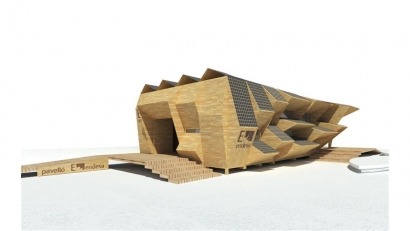
The smart grid has made important strides to date, attracting substantial infrastructure investment in smart metering, distribution automation, electric vehicle charging and other network investments. But much of the heavy lifting still lies ahead as the traditional energy sector, in partnership with new technology providers, must innovate and overhaul outdated business models to deliver true value to consumers and society.
Those key findings emerged from the 2011 Energy Smart Technologies Leadership Forum, hosted by Bloomberg New Energy Finance last month in Lisbon (Portugal). The Forum was the fourth in Bloomberg's series of events for senior smart energy experts, and brought together 60 leading players in the development of the new grid, including representatives of energy utilities such as EDP Distribuição, RWE and British Gas, as well as technology specialists Silver Spring Networks, Cisco Systems, SAP and Oracle.
The group’s perspectives on the industry and where it may be heading are reflected in the Forum Results Book published last week by Bloomberg New Energy Finance in conjunction with partner EDP Distribuição and sponsor Silver Spring Networks.
The book details the findings of the two-day workshop and scenario planning exercise. It is published ,last week at the GridWise Global Forum. The scenario planning exercise invited participants to imagine the grid 10 years from now. Currently, utility companies around the world are embarking upon projects that will see hundreds of millions of smart meters and other smart grid devices installed in the next decade. However, in a scenario where few new entrants or new products and services emerge to take advantage of smart network investments, benefits to the consumer could be relatively limited.
Disruptive innovation
Instead, it will be up to regulators and policymakers to remove barriers for new product and service offerings in areas such as smart home, demand response, distributed generation and electric vehicle management. Allowing not just utility companies but also disruptive innovators from other sectors to explore new business models will help to maximize value-creating activities around smart grid infrastructure.
Albert Cheung, Head of Energy Smart Technologies at Bloomberg New Energy Finance, expanded on the Forum’s findings: “Removing regulatory barriers to innovation and allowing new entrants into the market will help to realize the benefits of smart energy. Even in deregulated markets such as in Europe, innovation can be stifled by outdated regulations and legacy market rules. We believe that smart energy will not only herald a technology update for the power industry; it will also usher in a period of significant business innovation, leading to a very different energy sector than the one that exists today”.
Gil Forer, Leader of Ernst & Young's Global Cleantech Center, who also contributed to this book, explains: "The implementation of smart grid is one of the key enablers for a wide successful deployment of renewable energy and electric vehicles. But the required investment in smart grid infrastructure requires not only a significant amount of capital but also partnerships among various stakeholders and continuous technology and business model innovation”.
“Energy systems are changing and old rules will not prevail in the future. The trends of energy efficiency, increased electrification of the economy, decarbonisation of power generation and the role of grids in adapting supply/demand flows are a priority on the agenda of European utilities, who are heavily involved in research, development and pilot projects designed to validate new technologies and business models and innovation. There is ample scope and benefit for those who can design, produce and implement new solutions to succeed in aligning the power sector with a low carbon economy in a competitive, secure and sustainable manner,” added Miguel Stilwell d’Andrade, Executive Board Member and Chairman of InovGrid at EDP Distribuição.
[Photo: Model of Endesa's future SmartCity Control Center in Barcelona designed by the Institute for Advanced Architecture of Catalonia (IAAC).]
For additional information:

